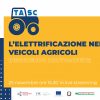Publications
2021 |
Gabrielli Alberto; Battarra Mattia; Mucchi Emiliano A Critical Analysis of Finite-Element Modeling Procedures for Radial Bearing Stiffness Estimation (Journal paper) Mathematical Problems in Engineering , 2021 (9955398), 2021, ISSN: 1024123X. (Abstract | Links | BibTeX | Tag: Battarra M., Gabrielli A., Mucchi E.) @article{2021c, title = {A Critical Analysis of Finite-Element Modeling Procedures for Radial Bearing Stiffness Estimation}, author = {Gabrielli Alberto; Battarra Mattia; Mucchi Emiliano}, doi = {10.1155/2021/9955398}, issn = {1024123X}, year = {2021}, date = {2021-08-30}, journal = {Mathematical Problems in Engineering }, volume = {2021}, number = {9955398}, abstract = {Different strategies are commonly employed by researchers in order to decrease the computational effort associated with the finite-element analysis of rolling-element bearings. The purpose of this work is to review and analyze the procedures and hypotheses that may be exploited to evaluate the nonlinear radial stiffness of these components. Techniques are utilized to develop a meshing procedure aimed at balancing the computational effort and the accuracy of the results, to define a robust approach to the problem. The geometry is reduced by taking advantage of the available symmetry planes, by removing unloaded rollers, and by substituting the shaft with an equivalent sinusoidal load. In addition, the element dimensions are adapted to the applied load depending on the size of the contact area as computed by means of the Hertz theory. The proposed methodology may be applied to all bearing types provided that symmetry conditions and contact area dimensions are properly assessed. The estimated stiffness is compared against analytical formulae retrieved from the literature. Influence of different element types, roller position, cage, and clearance on accuracy and computational time is discussed. }, keywords = {Battarra M., Gabrielli A., Mucchi E.}, pubstate = {published}, tppubtype = {article} } Different strategies are commonly employed by researchers in order to decrease the computational effort associated with the finite-element analysis of rolling-element bearings. The purpose of this work is to review and analyze the procedures and hypotheses that may be exploited to evaluate the nonlinear radial stiffness of these components. Techniques are utilized to develop a meshing procedure aimed at balancing the computational effort and the accuracy of the results, to define a robust approach to the problem. The geometry is reduced by taking advantage of the available symmetry planes, by removing unloaded rollers, and by substituting the shaft with an equivalent sinusoidal load. In addition, the element dimensions are adapted to the applied load depending on the size of the contact area as computed by means of the Hertz theory. The proposed methodology may be applied to all bearing types provided that symmetry conditions and contact area dimensions are properly assessed. The estimated stiffness is compared against analytical formulae retrieved from the literature. Influence of different element types, roller position, cage, and clearance on accuracy and computational time is discussed. |
2020 |
Alberto Gabrielli, Francesco Pizzolante, Elia Soave, Mattia Battarra, Cristiano Mazzeo, Marco Tarabra, Enrico Fava, Emiliano Mucchi A numerical model for NVH analysis of gearboxes employed on agricultural equipment (Conference) 2020 International Conference on Noise and Vibration Engineering, ISMA 2020 and 2020 International Conference on Uncertainty in Structural Dynamics, USD 2020, 2020, ISBN: 978-908289311-3. (Abstract | BibTeX | Tag: Battarra M., Fava E., Gabrielli A., Mazzeo C., Mucchi E., Pizzolante F., Soave E., Tarabra M.) @conference{Gabrielli2020, title = {A numerical model for NVH analysis of gearboxes employed on agricultural equipment}, author = {Alberto Gabrielli, Francesco Pizzolante, Elia Soave, Mattia Battarra, Cristiano Mazzeo, Marco Tarabra, Enrico Fava, Emiliano Mucchi}, editor = {Proceedings of ISMA 2020 - International Conference on Noise and Vibration Engineering and USD 2020 - International Conference on Uncertainty in Structural Dynamics}, isbn = {978-908289311-3}, year = {2020}, date = {2020-09-07}, booktitle = {2020 International Conference on Noise and Vibration Engineering, ISMA 2020 and 2020 International Conference on Uncertainty in Structural Dynamics, USD 2020}, pages = {3191-3203}, abstract = {The aim of this paper is to describe a numerical vibro-acoustic methodology, experimentally assessed, for the estimation of the overall vibratory and acoustic level of a gearbox employed on agricultural equipment. The process is carried out in order to create the NVH digital twin of the real gearbox. The vibro-acoustic model is the combination of three sub-models: a lumped-parameter (LP) model, a structural finite-element (SFE) model and an acoustical finite-element (AFE) model. The LP model is used to obtain the reaction forces on the bearings during working conditions. Reaction forces are employed as an input for the further SFE dynamic model to evaluate the dynamic response of the gearbox's case, which is the only meshed part. The dynamic response is exploited to set-up an AFE model which allows to estimate the noise generation in terms of overall acoustic pressure. The numerical simulation results are validated using experimental data acquired on a real gearbox. Testing activities have been carried out at Comer Industries facility in Reggiolo, where specimens and test benches have been set. Advantages and limitations of the model are reported.}, keywords = {Battarra M., Fava E., Gabrielli A., Mazzeo C., Mucchi E., Pizzolante F., Soave E., Tarabra M.}, pubstate = {published}, tppubtype = {conference} } The aim of this paper is to describe a numerical vibro-acoustic methodology, experimentally assessed, for the estimation of the overall vibratory and acoustic level of a gearbox employed on agricultural equipment. The process is carried out in order to create the NVH digital twin of the real gearbox. The vibro-acoustic model is the combination of three sub-models: a lumped-parameter (LP) model, a structural finite-element (SFE) model and an acoustical finite-element (AFE) model. The LP model is used to obtain the reaction forces on the bearings during working conditions. Reaction forces are employed as an input for the further SFE dynamic model to evaluate the dynamic response of the gearbox's case, which is the only meshed part. The dynamic response is exploited to set-up an AFE model which allows to estimate the noise generation in terms of overall acoustic pressure. The numerical simulation results are validated using experimental data acquired on a real gearbox. Testing activities have been carried out at Comer Industries facility in Reggiolo, where specimens and test benches have been set. Advantages and limitations of the model are reported. |





